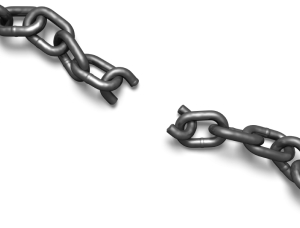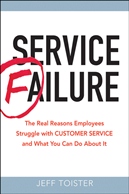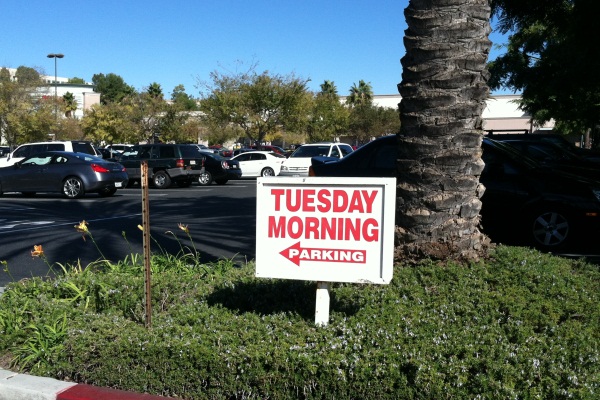Live Experiment: A breakthrough with Whirlpool?
 Jeff Toister
Jeff Toister  Thursday, December 6, 2012 at 8:07AM |
Thursday, December 6, 2012 at 8:07AM | I think I finally have a resolution after contacting Whirlpool 16 times to update an expired credit card. And, I've also confirmed my suspicions that there was a broken link in the chain. As I've written before, your service is only as good as the weakest link in the chain.
Background
My wife and I had a subscription where Whirlpool automatically sends out a new water filter for our refrigerator every six months and bills the credit card they have on file. Our credit card recently expired, but so far we've been unable to give Whirlpool the updated information. (You can follow previous posts here.)
Breakthrough
Yesterday, I exchanged direct messages on Twitter with Chris, a Whirlpool employee who monitors their customer service Twitter feed @WhirlpoolCare. This led to a phone call where I explained that between my wife and I, we had now contacted Whirlpool 16 times in an effort to update an expired credit card. Chris listened, apologized, but like everyone else we had interacted with, he told me he was unable to help me. However, unlike everyone else so far, Chris offered an alternative solution and explained why he was unable to fix my expired credit card (more on the credit card in a moment).
The alternative we agreed upon was that Chris would send us a complimentary water filter as a gesture of goodwill. It would then be up to me to re-establish a new online account with my updated credit card as a workaround to the problem. (I could also find an alternative source for the water filter.)
This is huge because, as I explained to Chris, I have a house full of Whirlpool appliances. Before this incident, I wouldn't consider another brand. Now, I wouldn't consider Whirlpool unless this was resolved. If the filter arrives as promised I'll consider Whirlpool back on my list of preferred appliance brands (their appliances are really, really good).
The Broken Link Chris also revealed the broken link in their chain. The water filters are fulfilled by a third party, so Whirlpool customer service employees have no access to that company's fulfillment system. The only tool they are given is the instructions on using the website that they can relay to customers. This explains why each customer service representative we've encountered has been unable to help. Apparently, the system's designers never imagined the system could break so there were no contingency plans for handling this sort of situation.
Chris also revealed the broken link in their chain. The water filters are fulfilled by a third party, so Whirlpool customer service employees have no access to that company's fulfillment system. The only tool they are given is the instructions on using the website that they can relay to customers. This explains why each customer service representative we've encountered has been unable to help. Apparently, the system's designers never imagined the system could break so there were no contingency plans for handling this sort of situation.
Unanswered Questions
I didn't want to press my luck by asking Chris too many question since I was his last customer of the day and he had stayed a little late to talk to me. My top priority was getting a resolution and I had that now. However, there are a few unanswered questions that could be instructive.
What is the escalation procedure? If a system is broken, someone should be able to escalate. Why couldn't (or wouldn't) Whirlpool's customer service employees escalate this issue to someone who was empowered to fix it?
Where is the process broken? The specific problem was technical, but was it on Whirlpool's end, the fulfillment company's end, or both? When two parties encounter a problem, the instinct is often to point the finger at the other party, which means nothing gets resolved.
What's the full impact? I have to imagine my wife and I aren't the only ones to experience this problem. Is this problem really an iceberg? In other words, how much business is Whirlpool losing due to situations like ours?
 Jeff Toister is the author of Service Failure: The Real Reasons Employees Struggle with Customer Service and What You Can Do About It. The book is available in paperbook, e-book, and audio book formats.
Jeff Toister is the author of Service Failure: The Real Reasons Employees Struggle with Customer Service and What You Can Do About It. The book is available in paperbook, e-book, and audio book formats.
You can learn more about the book at www.servicefailurebook.com or purchase a copy online at Amazon, Barnes & Noble, or Powell's Books.






